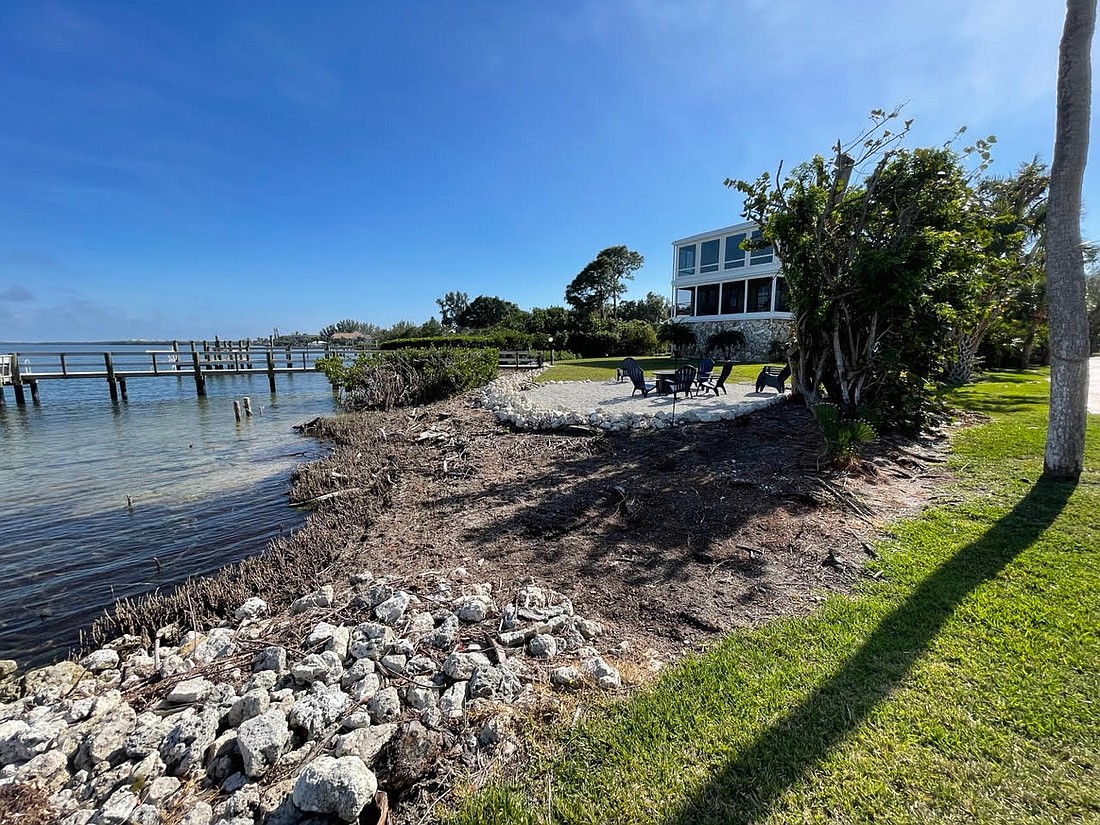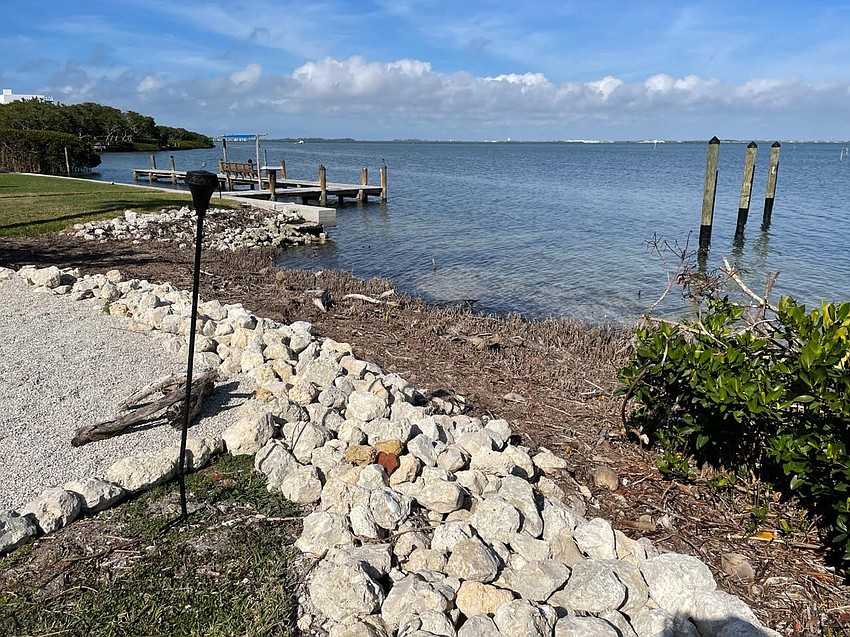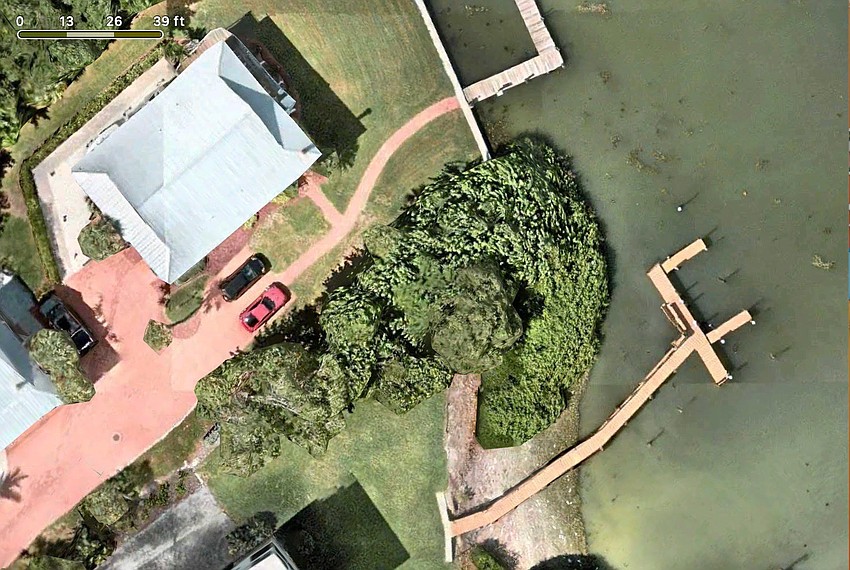- October 23, 2024
-
-
Loading

Loading

A couple weeks ago, a local resident, Justin Moore, made his way to his favorite fishing spot along the Sarasota Bay on Longboat Key. Upon arriving, he realized he was not confident he was in the right spot.
He quickly noticed what led to his confusion was the lack of mangroves that had characterized the spot for years.
Knowing their importance, he made a call to resident and chairman of the Suncoast Waterkeeper, Rusty Chinnis.
Chinnis recalled Moore classifying it as a disorienting experience as the mangroves have acted as a landmark for his fishing excursions for years.
“(Suncoast Waterkeeper) has gotten very involved in mangrove protection because we’ve seen a lot of mangrove destruction recently, particularly in Manatee County,” he said.
Mangroves are tropical plants that are adapted to loose, wet soils, salt water and being periodically submerged by tides. They provide a slew of benefits including fish habitats, seabird protection, water quality improvements and shoreline protection from storm surges, which is why the state regulates their trimming or removal.
Chinnis said it could be possible that people are trimming or removing the mangroves simply because they are not aware of their significance. There is potential, too, that people are illegally trimming and removing them knowingly to achieve a better view of the water from their property.

“If mangroves are trimmed properly, you can open up windows and have views through them,” he said. “It will actually enhance the value of the property rather than just having a stark seawall.”
The belief that trimming mangroves shorter will make trimming a less frequent need is a common misconception, Chinnis said. It actually encourages the mangroves to grow faster.
“If you do it right, not only do you up the value of your property, but you get to have your views and keep the mangroves healthy,” he said. “It’s a win-win.”
Confusion surrounding who regulates the trimming of mangroves, what the town can do to help protect its own habitat and when to seek out a professional mangrove trimmer are just a few of the puzzling questions had by residents new and old wishing to protect the species.
An issue Chinnis brought up specifically is a lack of education as populations in communities with mangroves continue to grow across the state.
The trimming and alteration of mangroves is regulated by the Florida Department of Environmental Protection.
In 2015, the town had to amend its tree protection ordinance to comply with the state’s Mangrove Trimming and Preservation Act, which created a comprehensive regulatory program for the alteration and trimming of mangroves within the state.
Unless there is a formal “delegation of authority” from the FDEP to a local government authorizing that local government’s regulation of mangroves, local governments are restricted from regulating the trimming or alteration of mangroves.
“When there is reported mangrove trimming, the town does coordinate with FDEP and their Compliance Assurance Program staff,” Planning, Zoning and Building Director Allen Parsons wrote in an email. “In cases where trimming is done without a valid FDEP permit, FDEP can and does pursue enforcement actions that include restoration and fines.”

Suncoast Waterkeeper and the town filed a complaint with FDEP about the illegal mangrove trimming at the property in Longboat Landing.
Sarasota County is a “delegated local government” that the state has given the authority to implement the Mangrove Trimming and Preservation Act.
Chinnis said he has talked with town staff about considering finding a way to take over the responsibility of mangroves from the state.
“I see it as an opportunity to educate the public at the same time,” he said. “I think Longboat Key should be an example of how a municipality should act. I think we should be a model for other communities because this bay, it’s the lifeblood of the community and it’s not getting the attention it deserves.”
Although the town does not have authority to regulate the trimming or alteration of mangroves, code enforcement should still be notified of any observed issues as they can investigate the issue and report it to the state to begin their own investigation.
According to state advice, removing all or most of the leaves, trimming mangrove roots, trimming mangroves below six feet and removing the mangroves entirely are all activities that should be avoided.
FDEP provided basic guidelines for homeowners when debating looking into trimming mangroves on their property. Outside of the below guidelines, all other mangrove trimming or alteration activities require a permit.
For a first violation of the act, property owners could be required to restore the area in lieu of a fine. Any subsequent violations will be met with a fine. For each mangrove illegally trimmed, the property can be fined up to $100. For each mangrove illegally altered, the property owner can be fined up to $250.